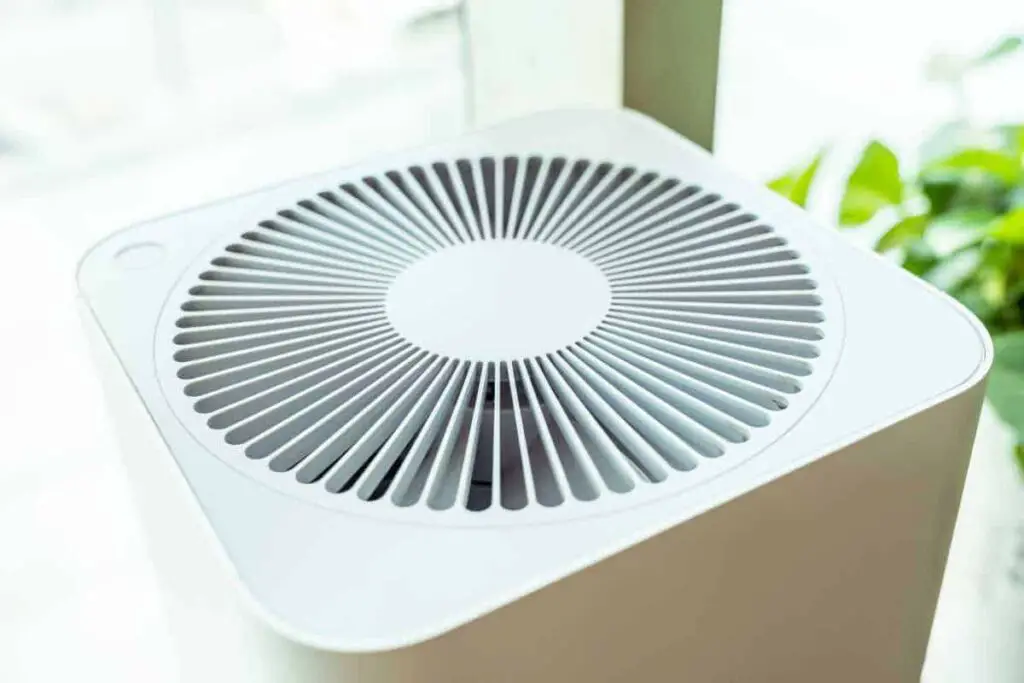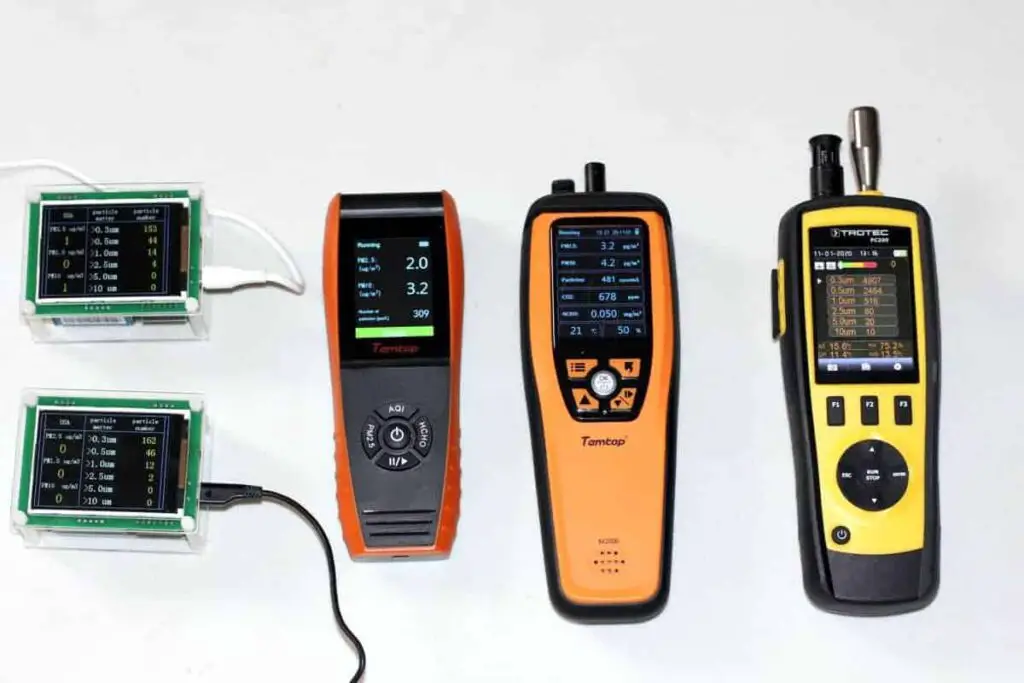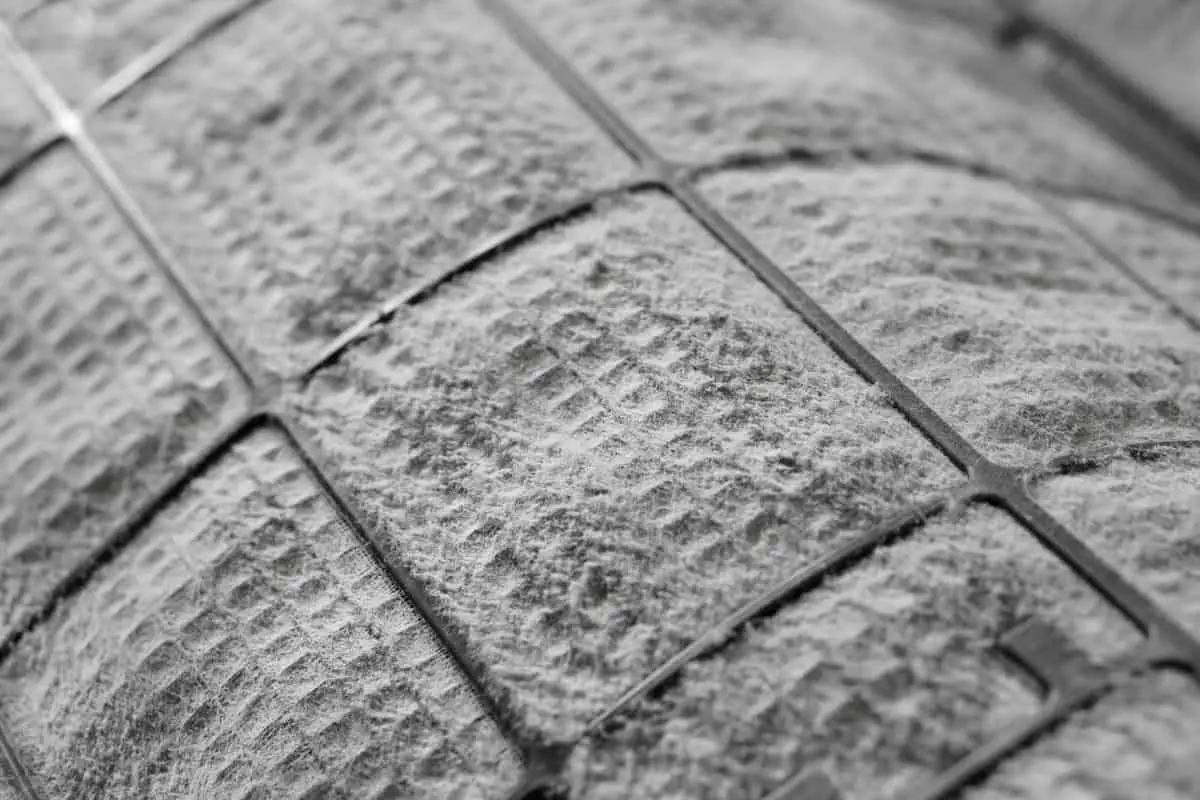An air purifier’s job is to clean and purify the air, but if it is not working, then the air you breathe becomes dirty. Before you rush out to buy a new one, some troubleshooting could save you some money.
There are a limited number of reasons an air purifier might not work. These are a mechanical or electrical fault, the filter needs replacing, it is too small for the room, is run at too low a setting or it is too close to a wall.
To distinguish between the different courses of an air purifier not working there are 2 main groups of problems-
- when the air purifier is making either too much or too little noise
- when the air purifier sounds fine
Abnormal Noise Levels From the Air Purifier
The Air Purifier Stops Making Any Noise
Probably the most likely cause is that the timer is incorrectly programmed. To check this you may need to consult the manual.
Alternatively, it could be due to an electrical fault either in the purifier itself or a circuit breaker or fuse in your home. If the humidity in your home is very, very high, moisture could short-circuit your unit. A purifier may have made pops and crackling sounds, it may never work again. As it is an electrical appliance that you are going to leave unattended for hours if you have this type of fault it is safest to replace the unit. Ideally, you should also determine what is causing the high humidity. You might need to invest in a dehumidifier.It

The Air Purifier Fan Makes a Loud Noise
The fan may be breaking up and catching the wall of the housing that it rotates in. There are reports of this for some models, although it is not a common fault. The best thing is to return it to the manufacturer if it is under guarantee. If the fan is structurally sound and the unit is not under guarantee, then you could unplug it from the electricity and get someone to remodel the fan by shaving off the part of the fan that is knocking against the casing with a sharp knife. This would only correct mild faults, and anyone doing this would need to have some DIY skills.
The Air Purifier Sounds Fine-How to Know if Your Air Purifier is Not Working
Just because your air purifier turns and stays on doesn’t mean it is cleaning the air. If you are concerned it is not purifying the air, you can test your purifier or the air.
Test Your Air Purifier Air Flow
First, test the airflow of your purifier. Turn the air purifier onto the maximum setting and put the back of your hand where the fan lets air out. You should feel a steady breeze. If not, your machine is not functioning correctly. If the air purifier is new you have you may not have removed the plastic wrapping the filters come in. If you open the purifier it should be obvious if the filters are wrapped in plastic-if you take it off the machine should work fine, If the purifier is not new and some air is coming out, then you could try changing the filters.
Particle Count in the Air-Test Your Air With an Air Quality Meter (Start at $35)
Ideally, when you brought your air purifier, you would also have brought an air quality meter. This is because it is impossible to tell the difference between a particle count of, for instance,10,000 particles per liter of air and 0 particles per liter! We cannot see or smell the particles.
Here are a range of air quality meters from $35 upwards (please also see here)–

People with very sensitive lungs may detect the difference between a very high and very low particle count. However, they could not tell how much higher the particle count is. So you should not rely on your senses to assess particle count.
You can do a particle count in the room with the air purifier switched off and then with the purifier on to see the difference in particle count and so gauge how well your air purifier is working. After an hour with the air purifier on the particle count will have reached its lowest point which should be less than 200 particles per cubic liter which a cheap air quality sensor, less than 400 particles per cubic liter with a midrange air quality sensor less than a thousand particles per cubic liter with a high-end air quality sensor. Or if your meter measures PM2.5 a PM 2.5 of less than 2ug/m3.
You should have an air quality meter separate from the air purifier. This is for 2 reasons-
- The air quality meters built into air purifiers often use different cheaper and less accurate technology compared to standalone meters. Standalone air quality meters use laser particle counting.
- The second reason is that you need to measure the air quality in the part of the room where you are going to be breathing the air. You can always move the meter to test the air at the outlet of the purifier to check whether it is working. Obviously, you cannot do this with the sensor in the air purifier.
Smells and Chemicals in The Air Can be a Sign Your Air Purifier is Not Working
For smells, your senses matter. If there is a smell present in the room when running the air purifier then smell the air leaving the air purifier to make sure it is coming from the air purifier.
If the air leaving the purifier smells odd, then if the purifier is new you may need to run it for a few days to see if the smell goes. If the purifier is not new, you need to change all the filters and clean the inside of the purifier according to the manufacturer’s instructions.
If the smell is not coming from the purifier then you need to address the source of the smell. You may also need a purifier with several pounds of charcoal in the filters such as the iQair Healthpro Plus or Austin Healthmate Plus. Many air purifiers have only a small coating of charcoal on the filter.

For chemicals you can buy meters which will detect these. Some particle meters can also detect formaldehyde and volatile organic compounds.
There are chemical test kits that will test for mold and mildew. Others will also measure volatile organic compounds, dander, and pollen. Be sure to follow directions for these tests. Most require that you turn off your purifier for several hours for the first test and then do a second test the next day. Also, check their expiration date.
To Work Out Why Your Air Purifier is Not Working Consider What Type You Have?
Knowing the type of air purifier is important in troubleshooting the problem. Your purifier may have two filters, for example. If you only replace one, you might not have solved the problem. These are the four main types of air purifiers available. Some models combine several methods for cleaning your air-
- Filters. Many purifiers clean the air by pulling it through a filter. When these filters become dirty, the purifier must work harder to move air through the filter. So that the airflow through the purifier decreases. The lower airflow may not be enough to purify your room. A simple filter change will cure this problem.
- Adsorbent. When one substance becomes trapped on the surface of another substance, it is called adsorption.
- Ionizing. Ionizing purifiers work by changing the positive or negative charge of airborne particles. Metal plates or wires inside the purifier attract particles to change their charges, causing the particles to clump together and sink out of the air. They are less effective at removing particles than filters. So if you test the air and find a higher particle count than you want which is very possible unfortunately it will mean buying a new purifier with a filter.
- UV light. Purifiers that use UV light do not filter out air particles but UV light to try to kill off bacteria and viruses.
The Filter Needs Replacing
The most obvious reason a purifier isn’t working correctly is that the air filter needs replacing. This is a straightforward fix—check your purifier’s manual for the correct filter and install a new one.
Some air purifiers have pre-filters which simply require washing and drying .
If your purifier has an indicator light for filter replacement and is still flashing after filter replacement, double-check that you have installed the filter correctly and closed the filter housing correctly. When you replace the filters, vacuum, or use a damp cloth to wipe the inside of the purifier clean. Also, clean the sensor-sometimes dirt can gather over any sensor, causing it to malfunction.
Filters remove particles but cannot remove chemicals from the air. Charcoal filters are used to trap odors and chemicals (volatile organic compounds-VOC) in the pores of the charcoal. So now many purifiers contain both charcoal and air filters. The problem is that they often simply have a filter with a coating of charcoal. So these filters can fail more easily because they become saturated so they cannot absorb further VOCs. Some air purifiers contain several pounds of charcoal, such as the iQair Healthpro Plus and Austin Healthmate Plus these filters last 4 years or more between changes.
The Purifier Is Too Small for the Room
Your air purifier should have a CADR (or Clean Air Delivery Rating). The Association of Home Appliance Manufacturers developed this measurement. It is an excellent way to compare purifiers and get a general idea of the air purifier you need based on your room’s square footage.

Multiplying the CADR of your air purifier by 1.5 that will give you the maximum size of the room (in square feet) it can service. This assumes 8 foot ceilings. If your ceilings are taller then you will need to use a calculator to work out what floor space the air purifier is suitable for.
Bare in mind that the CADR is based on your air purifier’s highest speed which you may not be able to tolerate in the room due to the noise. So ideally you need to know how noisy the air purifier is and the CADR at each fan speed before you buy it.
The Purifier is on Too Low a Setting
You may have switched the purifier onto a low setting to cut the noise of the purifier. The classic time to do this is during the night in the bedroom. Manufacturers often tout “whisper quiet” sleeping mode. They rarely make clear that in this mode the air may not be purified adequately. So you really need an air quality meter to check the air quality if you want to run the purifier on a lower setting.
The Purifier Is Too Close to a Wall
Purifiers need to be far enough from a wall to circulate air properly in a room. A minimum of 12 inches from a wall is ideal. Corners are particularly bad.
The Purifier Needs to Be Cleaned
The metal rods in ionic air purifiers that produce ions collect dust and fluff. You should check the rods regularly and clean them. If dust and fluff are not accumulating on them, the purifier will not work optimally.
Your ionizer might have a compartment that collects dust and other pollutants. Again, check the compartment regularly, and if it is clean, then the ionizer is not functioning correctly.
There Is Too Much Moisture in the Air
If condensation forms on the filter, it will block some pores in the filter, increase its resistance. If the humidity is very high, really only when over 90% a HEPA filter can become very inefficient.
There is Air Leaking Into the Room From Outside
The air in a room may remain partially polluted if air is leaking into the room through or around a door or window. The particles of about 0.3um that air purifiers have most difficulty dealing with are those that penetrate buildings the best! You can detect this by using an air quality sensor that ideally counts particles to see where in the room the particle count is highest.
There is a Source of Pollution in the Room
If there is a source of pollution in the room, the air purifier may be working but unable to purify adequately the air. This is unlikely as it will usually be obvious if there is a source of pollution in a room. The one time this occurs is in the kitchen when cooking can be a considerable cause of particle emission into the air. You can detect this by using an air quality sensor that ideally counts particles to see where in the room the particle count is highest.
Other Ways to Improve Air Quality To Aid an Air Purifier Which is Failing to Purify the Air Satisfactorily
An air purifier is a great way to improve the air in your house but consider using some additional methods-
- Let the fresh air in. Unless you live in a heavily polluted area, opening a window occasionally to bring fresh air in is a good idea. Also, check the humidity in your home.
- Add plants?? Although this seems a good idea you would need approximately 1000 plants per room to have reduce VOCs. Even then particulate matter in the air would not be reduced.
- Vacuum regularly with a vacuum cleaner with a HEPA air filter. It is probably best to have a robotic vacuum cleaner so that it is much easier to do this. I know in my house the dust level went down very significantly when we swopped to a robotic vacuum cleaner. Probably weekly.
- Dust regularly, probably monthly depending on dust levels in your home.
- Use an extractor fan to extract air to the outside when cooking
- Consider using an electric induction hob for cooking rather than a gas hob
Also, try to avoid:
- Air fresheners. Manufacturers of air fresheners are not required to reveal the composition of their “fragrance,” so it is difficult to know what kinds of chemicals the fresheners are putting into the air. Researchers who tested air fresheners have found that some emit toxic or hazardous air pollutants.
- Scented cleaning products. As much as possible, try to buy unscented detergents, fabric softeners, and other cleaning products. To get a clean scent, use a homemade cleaner with vinegar, baking soda, water, and lemon juice.
- Candles or anything else that is burnt in the living space.
Conclusion
There are two main situations when you may find your air purifier is not working–
The first one is when the air purifier is making too much or too little noise so something is wrong.
The second one is a much more common group in which an air purifier is not working when nothing seems wrong. This is particularly dangerous as there is no way of telling other than by testing the air-with an air quality meter that can detect particles. Although I do not know of any official figures, I found that even as a doctor with asthma I ran one of my air purifiers so it was not really working effectively. I was running the air purifier in my bedroom at a slower rate to keep the noise down. When I got a particle counter, I found I needed the air purifier on one fan speed higher to clean the air properly.
So I recommend that everyone who buys an air purifier should buy a separate air quality monitor (they start at $35) that will measure the particles in the air. This is to check that the purifier adequately reduces particles in the part of the room where you usually sit or work. It would be very disappointing to find out years after using the purifier it has never been working well enough to give you properly clean air to breathe.
An air quality monitor will also allow you to troubleshoot the cause of impaired air quality if this becomes necessary. In addition, it will also let you see which household activities increase the particle count, for example cooking in a kitchen without an extractor fan.
Fortunately, if your air purifier is not working often, the solution is straightforward.
The chief difficulty can be working out that it is not working adequately!

